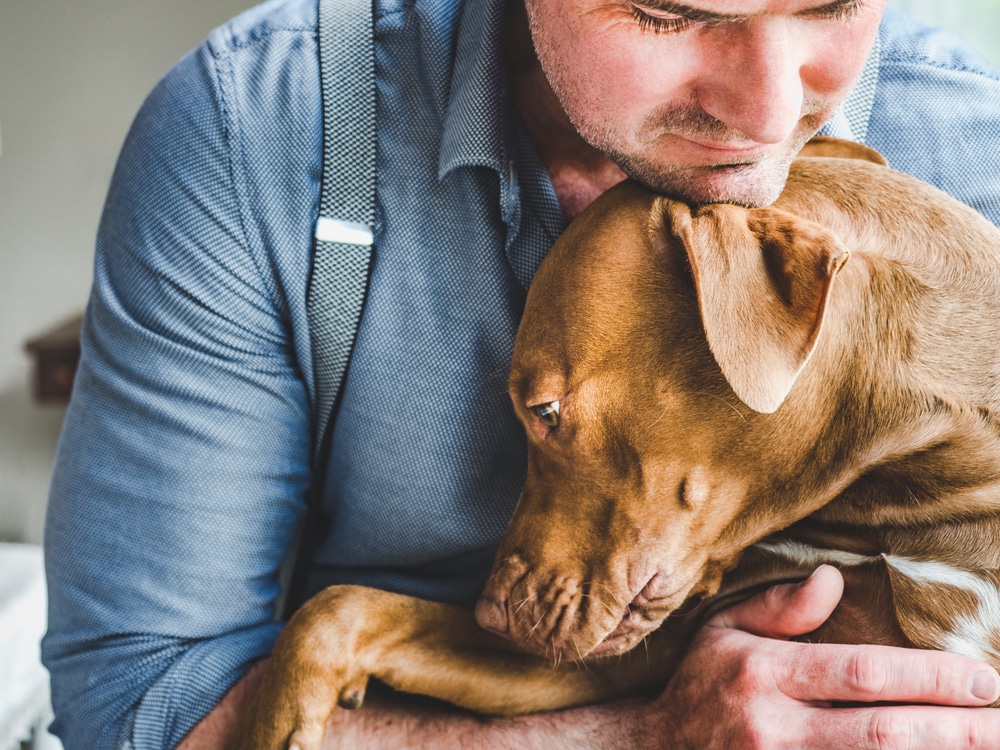As veterinarians and pet parents, we are tasked with keeping our furry family members happy and healthy for as long as possible. But dogs have a shorter lifespan than people, and no matter how well we care for them, eventually, we will have to deal with end-of-life decisions, whether it is due to old age or illness. In the veterinary community, we have the option to help our patients leave this world with dignity and without suffering. So, is it humane to put down a dog?
It is humane to put a dog down. In fact, when a dog is suffering, humane euthanasia is often the kindest thing you can do for them. There are many reasons dogs are euthanized, including poor quality of life due to untreatable illness, financial limitations, and behavioral issues. Quality-of-life scales can be a good resource, and your vet will be there to help support you during this time. There are also many options available to help owners deal with grief after the loss of a pet.
Table of Contents
What Is Euthanasia?
Humane euthanasia involves the injection of a drug such as Euthasol to end a dog’s life. This medication is also known as pentobarbital and is a seizure medication that leads to painless, rapid death when injected in large dosages. The medication causes unconsciousness, after which the heart stops beating, and the patient stops breathing.
It is generally injected intravenously. However, in some cases, other routes of injection are used, such as injection directly into the heart or abdominal organs. Euthanasia must be performed by a licensed veterinarian. The goal of euthanasia is to provide a good death without pain or suffering.
How Do You Know When It’s Time To Euthanize?

The decision of when to say goodbye to a beloved pet is a difficult and personal one. You know your dog better than anyone. When you stop noticing the little quirks that make them special, that they are no longer doing activities that they used to love, or that they have more bad days than good ones, it may be time. More obvious signs include if a dog stops eating, drinking, moving, and is unable to urinate or defecate appropriately. In some cases, animals may be euthanized for behavioral reasons, such as aggression towards people or other animals, or if their owners are financially unable to provide needed medical treatments. You may find it helpful to consult a quality-of-life scale. When making the decision to euthanize, it is also important to consider your quality of life as well as your pet’s.
The Process of Humane Euthanasia
Here’s what the process of humane euthanasia looks like.
Where To Euthanize
Euthanasia may be performed by your vet in the veterinary clinic. There are also veterinarians who will come to your house to perform in-home euthanasia. When making this decision, it is important to consider where you and your pet will feel most comfortable, who would like to be present, the timing/urgency, and any financial constraints (in-home euthanasia may be more costly). If you opt for euthanasia in the veterinary clinic, you are welcome to bring in any comfort items your dog has.
Should You Be Present For Euthanasia?
It is up to you whether or not you decide to be present for the euthanasia. Some pet owners opt to stay until their dog is sedated but leave before the final injection is given. Your veterinarian wants what is best for your pet AND for your mental well-being.
If you do not wish to be present, there will be a number of staff members who will be there to comfort your pet. Once they are sedated, they will not be aware of your presence. Either way, your vet will walk you through the process and unless there are extenuating circumstances, you may spend as much time as you wish with your pet before and after.
Sedation
Many vets start the euthanasia process by first giving an injection of a sedative. Depending on the type of medication used and how it is injected, this may sting for a moment. Over the next 10-15 minutes, they will peacefully fall asleep. In some cases where a dog is extremely ill, the sedative alone may be enough to lead to death.
Euthanasia Injection
When you are ready, your veterinarian will inject the euthanasia solution. This usually involves injecting directly into a vein or through an IV catheter that has been previously placed. Pentobarbital will lead to immediate unconsciousness followed by death as brain functions stop, breathing stops, and the heart stops beating.
After The Injection
While the euthanasia process generally is very smooth and peaceful, owners should be aware of a few natural reactions that occur to the body during and after death. Your dog’s eyes will likely stay open. You may see some muscle twitching and hear some deep breaths after your dog has passed, known as agonal breathing. This is just a result of nerves firing, so be assured that your dog is not suffering. Lastly, many animals urinate and defecate during euthanasia. Your veterinarian will verify death by listening for a heartbeat with their stethoscope.
Options For Body Disposal
It is best to consider these things before euthanasia, if possible. Options for body disposal include bringing your dog home for burial, private cremation, or group cremation. You may also choose if you would like to keep your dog’s ashes, and many clinics also offer a memorial paw print.
Support After The Loss Of A Pet
Losing a fur baby can be devastating. Grief, sorrow, and even guilt are all normal feelings at this time. If you or someone you know needs additional help dealing with grief after pet loss, there are many resources available. There are also many ways to remember and honor the memory of your dog.
Conclusion: Is Putting A Dog Down Humane?
It can be extremely hard to watch a furry family member decline. No matter how well we care for them, end-of-life decisions are inevitable. Luckily, we have the option to help our beloved pets leave this world in a dignified and pain-free manner through humane euthanasia. If you have questions about euthanizing your dog, please reach out to your vet.
So, have you ever had to put a dog down, or will this be the first time? We know this is a difficult time, but sometimes talking about it can help. We wish you well.
